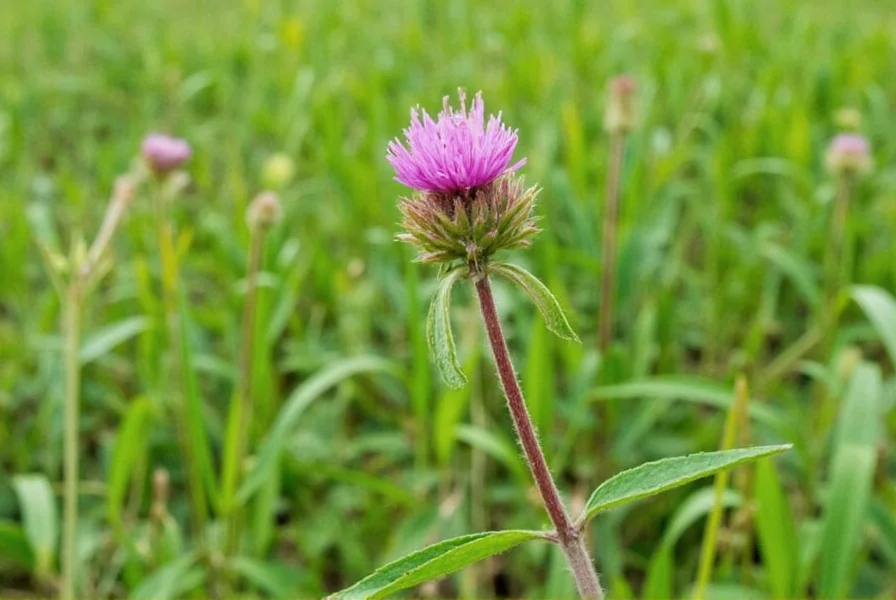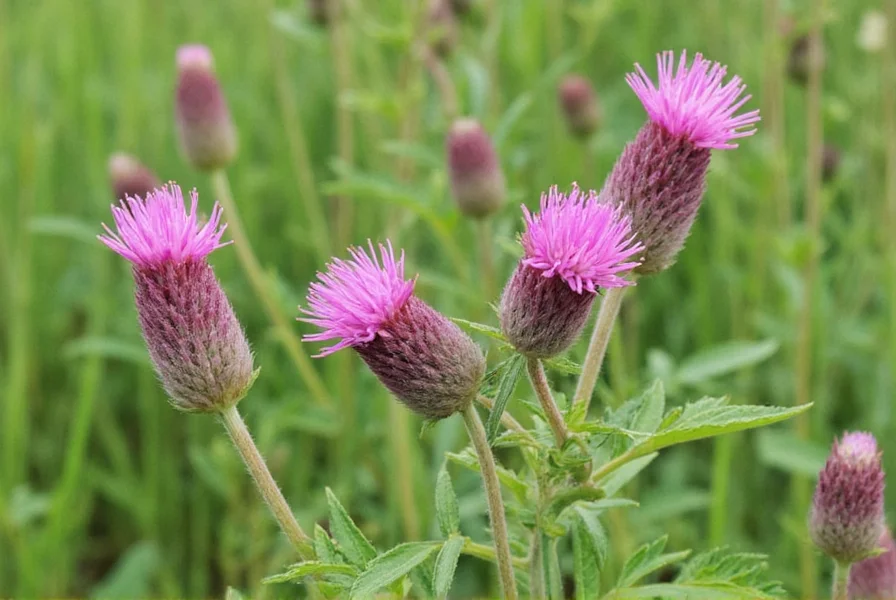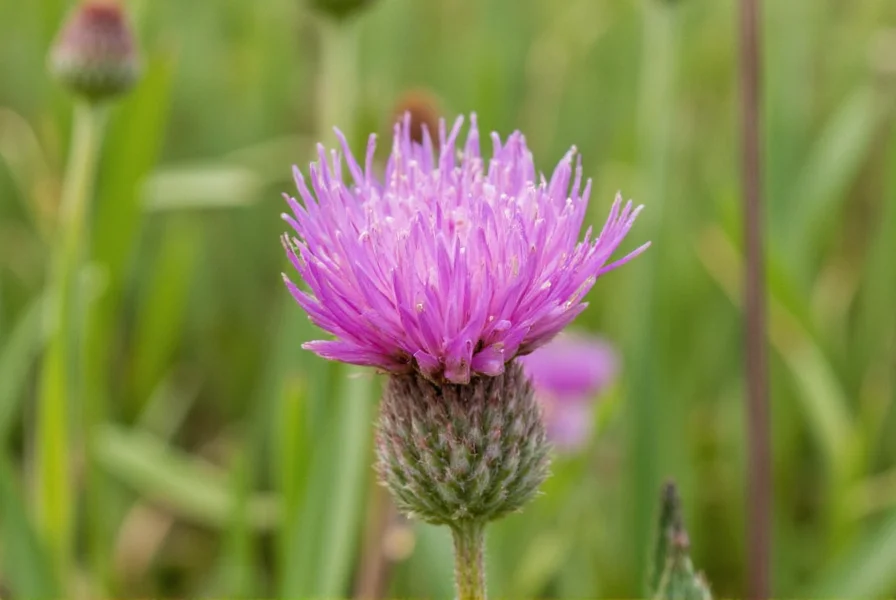Purple prairie clover stands as one of the most ecologically significant native plants across North American grasslands. This hardy perennial, scientifically known as Dalea purpurea, plays a crucial role in maintaining healthy prairie ecosystems through its nitrogen-fixing capabilities and support for diverse pollinator populations. Unlike many non-native clover species, purple prairie clover has evolved specifically for the challenging conditions of native grasslands, making it an excellent choice for ecological restoration and sustainable landscaping projects.
Botanical Classification and Nomenclature
The precise scientific identification of purple prairie clover helps distinguish it from similar species. Dalea purpurea belongs to the Fabaceae family, commonly known as the legume or bean family. It falls under the subfamily Faboideae and tribe Daleae. The genus name Dalea honors English botanist Samuel Dale (1659-1739), while the species epithet purpurea refers to the plant's characteristic purple flower color.
Common names for this species include purple prairie-clover, purple dalea, and sometimes simply prairie clover. It's important to note that purple prairie clover is not closely related to true clovers in the genus Trifolium, despite the similar common name. This distinction matters when researching native plant gardening for prairie restoration projects or selecting appropriate species for drought-tolerant native plant landscaping.

Physical Characteristics and Identification
Purple prairie clover typically grows 1-3 feet tall with multiple slender, upright stems emerging from a woody base. Its most recognizable feature is the dense, cylindrical flower spike that appears at the top of each stem. These spikes, measuring 1-3 inches long, display tiny purple to pinkish-purple flowers arranged spirally around the central stalk.
The plant's foliage consists of pinnately compound leaves with 3-7 pairs of small, linear leaflets. Each leaflet measures approximately 1-2 inches long and appears grayish-green due to fine hairs covering the surface. During the growing season from late spring through summer, the flower spikes develop from the top downward, creating a striking visual effect as the lower portion sets seed while the upper portion continues blooming.
When identifying purple prairie clover versus white prairie clover (Dalea candida), note that purple varieties maintain their characteristic color throughout blooming, while white prairie clover may occasionally show pinkish hues but predominantly features white to pale pink flowers. This distinction proves valuable for native plant identification in Midwest prairie ecosystems.
Native Habitat and Geographic Distribution
Purple prairie clover naturally occurs across a wide swath of North America, from southern Canada through most of the United States east of the Rocky Mountains. Its native range extends from Montana and North Dakota eastward to Ohio and Pennsylvania, and southward to Texas and Florida. This extensive distribution demonstrates the plant's adaptability to various climate conditions while maintaining its preference for well-drained soils.
Within its native range, purple prairie clover thrives in specific habitat types including:
| Habitat Type | Soil Conditions | Companion Plants |
|---|---|---|
| Tallgrass prairies | Well-drained loam | Big bluestem, Indian grass |
| Shortgrass prairies | Sandy or gravelly soils | Buffalo grass, blue grama |
| Prairie remnants | Variable, often calcareous | Prairie dropseed, blazing star |
| Roadside prairies | Disturbed, often compacted | Black-eyed Susan, coneflowers |
The plant demonstrates remarkable drought tolerance once established, making it particularly valuable in regions experiencing increasing aridity due to climate change. Its deep taproot system, which can reach depths of 6-10 feet, allows it to access water unavailable to shallower-rooted species. This characteristic makes purple prairie clover an excellent choice for xeriscaping and water-wise gardening in native plant landscapes.
Ecological Importance and Benefits
As a member of the legume family, purple prairie clover performs the vital ecological function of nitrogen fixation. Through a symbiotic relationship with Rhizobium bacteria in root nodules, it converts atmospheric nitrogen into a form usable by plants. This natural fertilization process enriches the soil without artificial inputs, benefiting surrounding vegetation in native prairie restoration projects.
The flowering period of purple prairie clover, typically from June through August, coincides with critical periods for many native pollinators. Research shows that a single purple prairie clover plant can support over 50 different species of bees, butterflies, and other beneficial insects. The dense flower spikes provide abundant nectar and pollen resources during mid-summer when many other native plants have finished blooming.
For wildlife habitat creation, purple prairie clover offers multiple benefits:
- Provides high-protein forage for grazing animals including deer and prairie chickens
- Seeds serve as food for songbirds and small mammals
- Supports specialist pollinators like the prairie leaf-cutter bee
- Creates microhabitats for ground-dwelling insects through its dense growth habit
Cultivation Requirements for Gardeners and Land Managers
Successfully establishing purple prairie clover requires understanding its specific growing needs. Unlike many non-native clovers, this species prefers full sun exposure (at least 6-8 hours daily) and well-drained soils. It performs poorly in heavy clay soils or areas with poor drainage, making soil preparation essential for successful establishment in native plant gardens.
For optimal germination, seeds require cold-moist stratification. Gardeners can achieve this by:
- Planting seeds in fall to allow natural winter stratification
- Refrigerating seeds mixed with moist sand for 60 days before spring planting
- Using a seed scarification process for immediate spring planting
When incorporating purple prairie clover into native plant landscaping projects, consider these best practices:
- Plant in mixtures with complementary species like little bluestem and purple coneflower
- Use appropriate seeding rates (2-4 pounds per acre for restoration projects)
- Avoid fertilizers which favor non-native species over native plants
- Implement periodic prescribed burning to maintain healthy stands

Applications in Restoration and Sustainable Landscaping
Land managers increasingly recognize purple prairie clover as a valuable component in ecological restoration efforts. Its ability to fix nitrogen makes it particularly useful in restoring degraded soils where fertility has been depleted. In post-agricultural land restoration, purple prairie clover often serves as a pioneer species that improves soil conditions for later-successional plants.
For homeowners interested in sustainable landscaping, purple prairie clover offers several advantages over traditional lawn alternatives:
- Requires minimal watering once established
- Needs no chemical fertilizers due to nitrogen-fixing capabilities
- Provides year-round visual interest with changing seed head forms
- Supports local biodiversity more effectively than non-native species
When designing native plant gardens featuring purple prairie clover, consider these design principles:
- Group plants in clusters of 5-7 for visual impact
- Position taller grasses behind purple prairie clover for layered effect
- Combine with late-summer bloomers like goldenrod for continuous color
- Leave seed heads standing through winter for wildlife value and visual interest
Conservation Status and Threats
While purple prairie clover remains relatively common across much of its native range, it faces significant threats from habitat loss. The conversion of native prairies to agricultural land has reduced its natural habitat by over 99% in some regions. In certain states, including Michigan and New York, purple prairie clover appears on watch lists due to declining populations.
Conservation efforts focus on several key strategies:
- Preserving remaining prairie remnants through land protection
- Restoring degraded prairies using locally-sourced seed
- Creating habitat corridors to connect isolated populations
- Developing seed increase protocols for restoration projects
Gardeners can contribute to conservation by selecting ecologically appropriate seed sources. When purchasing purple prairie clover for native plant gardening, look for seeds labeled with specific provenance (origin) to ensure genetic compatibility with local ecosystems. This practice supports regional biodiversity and prevents potential genetic swamping of local populations.
Conclusion
Purple prairie clover represents far more than just a pretty flowering plant. As a keystone species in native prairie ecosystems, it provides essential ecological services including soil enrichment, pollinator support, and wildlife habitat. Its remarkable adaptability to challenging growing conditions makes it an increasingly valuable component of sustainable landscaping and ecological restoration projects across North America. By understanding and incorporating this native plant into our landscapes, we can help preserve biodiversity while creating beautiful, functional spaces that support local ecosystems.
Frequently Asked Questions
How does purple prairie clover differ from white prairie clover?
Purple prairie clover (Dalea purpurea) features distinctive purple to pinkish flower spikes, while white prairie clover (Dalea candida) produces white to pale pink flowers. Purple varieties typically grow in drier habitats with better drainage, while white prairie clover tolerates slightly moister conditions. The two species often grow in similar regions but occupy slightly different ecological niches within prairie ecosystems.
Can purple prairie clover be grown in home gardens?
Yes, purple prairie clover adapts well to home gardens when provided with appropriate growing conditions. It requires full sun, well-drained soil, and minimal supplemental watering once established. Gardeners should avoid fertilizers and rich soils, which favor non-native species over this native plant. For best results, plant purple prairie clover in native plant gardens alongside complementary species like little bluestem and purple coneflower.
How long does purple prairie clover live?
Purple prairie clover is a perennial plant with a typical lifespan of 5-10 years under optimal conditions. Its longevity depends on factors including soil conditions, competition from other plants, and management practices. In well-maintained prairie restorations with periodic prescribed burning, individual plants may persist longer through both seed reproduction and root crown regeneration.
Is purple prairie clover beneficial for pollinators?
Yes, purple prairie clover provides exceptional value for pollinators. Its summer-blooming period fills a critical gap when many spring-blooming plants have finished flowering. Research shows it supports over 50 species of native bees, including specialist prairie bees, as well as butterflies and other beneficial insects. The dense flower spikes produce abundant nectar and pollen, making it a valuable resource during mid-summer months.
Does purple prairie clover require special soil preparation?
Purple prairie clover performs best in well-drained soils without amendments. Unlike many garden plants, it thrives in lean, native soils and actually suffers in overly rich conditions. For successful establishment, focus on removing invasive species and ensuring good seed-to-soil contact. The plant's deep taproot system allows it to access nutrients and moisture unavailable to shallow-rooted species, making soil amendments generally unnecessary for this native plant.











 浙公网安备
33010002000092号
浙公网安备
33010002000092号 浙B2-20120091-4
浙B2-20120091-4